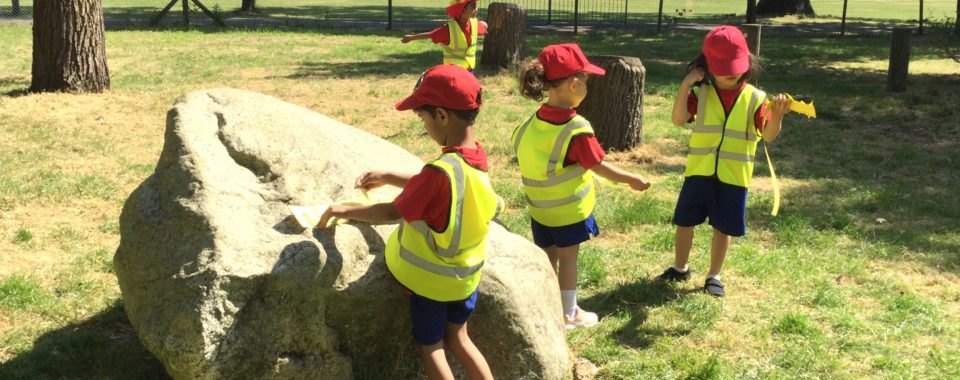Geography
Our vision at St Jérôme Church of England Bilingual School is for our children to have a multilingual and multicultural education that enables them to embrace diversity and think globally. We want them to recognise the beauty and potential of the planet on which they live and to understand the relationship between people and the earth.
Geography in EYFS
In EYFS, as an important part of the ‘Understanding the World’ strand of the curriculum, pupils explore the world through the topics Let’s Explore, Ready Steady Grow and On the Beach.<
Geography in Key Stage 1
In Key Stage 1, each autumn term begins with essential skills and knowledge projects (Our Wonderful World in Year 1 and Let’s Explore the World in Year 2). In these topics, children learn critical geographical concepts, aspects, skills and knowledge. Throughout Key Stage 1, progression in learning is developed through topics such as Our Wonderful World; Let’s Explore the World; Bright Lights, Big City and Coastline. These topics allow for exploration of contrasting environments.
Geography in Key Stage 2
Throughout Key Stage 2, pupils begin each year with a topic to build their essential skills and knowledge. These include: One Planet, Our World; Interconnected World; Investigating Our World and Our Changing World. Key Stage 2 also allows pupils to explore physical features of geography in more detail in the topics Rocks, Relics and Rumbles; Misty Mountain, Winding River; Sow, Grow and Farm and Frozen Kingdoms.
Pupils are taught to:
Locational knowledge
- name and locate the world’s 7 continents and 5 oceans
- name, locate and identify characteristics of the 4 countries and capital cities of the United Kingdom and its surrounding seas
- Name and locate countries where French is spoken and to recognise major cities and regions of France
Place knowledge
- understand geographical similarities and differences through studying the human and physical
geography of a small area of the United Kingdom, and of a small area in a contrasting non-European
country.
Human and physical geography
- identify seasonal and daily weather patterns in the United Kingdom and the location of hot and cold
areas of the world in relation to the Equator and the North and South Poles - use basic geographical vocabulary to refer to:
- key physical features, including: beach, cliff, coast, forest, hill, mountain, sea, ocean, river, soil,
valley, vegetation, season and weather - key human features, including: city, town, village, factory, farm, house, office, port, harbour and
shop
- key physical features, including: beach, cliff, coast, forest, hill, mountain, sea, ocean, river, soil,
Geographical skills and fieldwork
- use world maps, atlases and globes to identify the United Kingdom and its countries, as well as the countries, continents and oceans studied at this key stage
- use simple compass directions (north, south, east and west) and locational and directional language [for example, near and far, left and right], to describe the location of features and routes on a map
- use aerial photographs and plan perspectives to recognise landmarks and basic human and physical features; devise a simple map; and use and construct basic symbols in a key
- use simple fieldwork and observational skills to study the geography of their school and its grounds and the key human and physical features of its surrounding environment
You can download our curriculum plan here.


